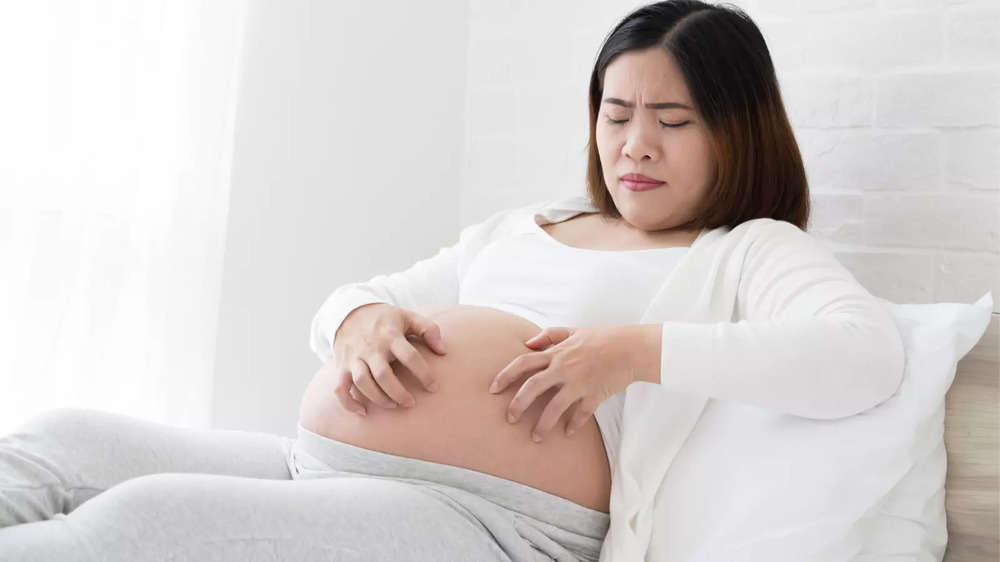In this article:
Are the changes in your body making you feel self-conscious?
Thinking about how these marks will fade?
Pregnancy is a journey to remember, but it also comes with its own set of unique changes, which include stretch marks. These stretch marks may seem challenging, but they are completely natural. Thinking about what causes them and how to manage them during this incredible phase of life?
Go through the self-care strategies below to make it easy for you to cherish your body’s changes.
Stretch Marks: An Overview
Rapid skin stretching from growth or weight changes produces linear scars called stretch marks. This happens particularly in the abdomen, breasts, and thighs. Pregnancy causes significant skin stretching.Ranging from red or purple to silvery-white over time, these marks might differ in appearance, texture, and colour. Though not harmful, they can affect a woman's confidence and body image.
Stretch Mark Stages
Below are the essential stages of stretch marks that you must learn about before proceeding:- Striae rubra: The early stage of stretch marks, characterised by red or purple hues and sometimes a slightly raised appearance.
- Striae alba: The mature stage, where marks turn silvery-white and become more atrophic and less prominent over time.
How Do Stretch Marks Develop?
There are several reasons that lead to stretch marks associated with pregnancy, and some of the common ones are:Skin Elasticity and Collagen
These are responsible for the structure and flexibility of the skin. Stretch marks can develop as a result of the collagen fibres in the skin being strained beyond their natural limit.
Factors Influencing Stretch Mark Formation
- Genetics: If a woman's mother or sister had stretch marks, she may be more predisposed to them.
- Hormonal changes: Increased levels of hormones like cortisol can affect skin elasticity.
- Rapid growth: Sudden weight gain or growth spurts can overwhelm the skin’s ability to adapt.
Common Areas Affected by Stretch Marks During Pregnancy
Stretch marks can appear in various areas of the body during pregnancy, notably:Abdomen
Breasts
Thighs
Hips
Buttocks
Symptoms of Stretch Marks in Pregnancy
While stretch marks are primarily a cosmetic concern, they can present with specific symptoms:Appearance and texture
Colour Variations
Itching or Discomfort
Risk Factors for Developing Stretch Marks
There are certain factors that increase the likelihood of developing stretch marks, and can help you take proactive steps. These mainly include:Genetics and Family History
Rapid Weight Gain or Loss
Hormonal Changes
Age
Prevention of Stretch Marks
While it may not be possible to completely prevent stretch marks, certain practices can minimise their occurrence:Hydration and Skin Care
Nutritional Considerations
Moisturisers and Oils
Maintaining a Healthy Weight
Treatment Options for Stretch Marks
If stretch marks do occur, various treatment options are available:Topical Treatments (Creams and Oils)
Note: Retinoid creams should only be used postpartum, as they are not recommended during pregnancy due to potential risks to the developing fetus
Medical Treatments (Laser Therapy, Microdermabrasion)
Home Remedies and Natural Solutions
Myths and Misconceptions About Pregnancy Stretch Marks
Stretch marks are often surrounded by myths and misconceptions:Common Myths Debunked
- Only Overweight Women Get Stretch MarksThis is false; even women with a healthy weight can develop stretch marks.
- Stretch Marks Are PermanentWhile they may not disappear completely, their appearance can improve over time.
- You Can Prevent Stretch Marks CompletelyGenetics and hormonal changes play a significant role, making total prevention unlikely.
Understanding the Reality of Stretch Marks
It's essential to recognise that stretch marks are a natural part of pregnancy for many women. They are not a sign of poor health or lack of care and should be viewed as a testament to the body's remarkable ability to create life. Stretch marks typically develop in the third trimester as the belly expands rapidly.Postpartum Fading
Many women notice that their stretch marks start to look different after pregnancy. You’ll likely see them become less visible and fade quite a bit between six to twelve months after giving birth. Depending on your skin tone, stretch marks may first appear as red, purple, or dark brown lines.Over time, as your skin heals and regenerates, these marks usually fade to a silver or white tint. Several factors contribute to this fading process. Your body continues to produce elastin and collagen. These are the two key components that help your skin stay supple and repair itself.
This natural healing helps reduce the appearance of stretch marks. Keeping your skin hydrated and well-cared for can speed up this process. By moisturising regularly, you can improve your skin’s overall texture and make stretch marks less noticeable.
When to Seek Medical Advice
If your stretch marks become very itchy and painful, or start to look unusual, you must consult a healthcare expert. Sometimes, skin changes can point to other health issues, so getting them checked can help you stay safe.During pregnancy, your skin goes through many changes, and it’s normal to have questions or concerns. Speaking with a healthcare professional can give you peace of mind.
They can guide you, suggest safe creams or treatments, and make sure everything is okay. Don’t ignore any discomfort since getting the right advice early can make a big difference.
Stretch marks are a normal part of pregnancy, and it’s likely you’ll experience them as your body changes. They often appear when your skin stretches quickly to make room for your growing baby. Understanding how they form and how to care for your skin can make a big difference.
Talk to your doctor or a dermatologist to explore safe and effective options. Along with this, follow a simple skincare routine and stay active to support your body. Pregnancy is a special journey, and looking after yourself helps you enjoy it with ease and comfort.
FAQs on Pregnancy Stretch Marks: Here's All You Need To Know
- Do all women get stretch marks during pregnancy?
Not every woman will get stretch marks while pregnant. Genetics, weight increase, and skin type, among other things, affect their frequency. - Will stretch marks fade after pregnancy?
Indeed, following pregnancy, stretch marks usually disappear to a lighter hue. While they may not disappear completely, their appearance typically improves over time.






